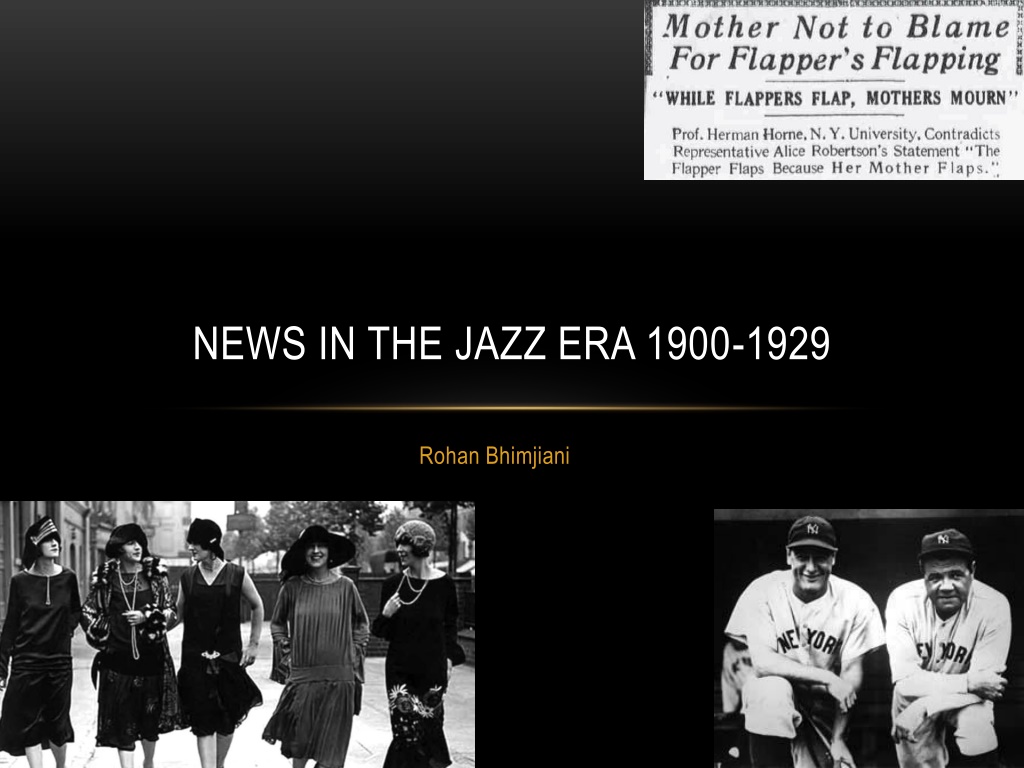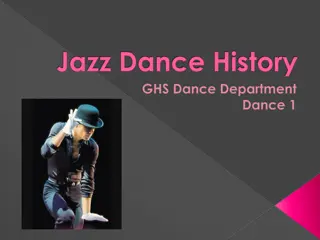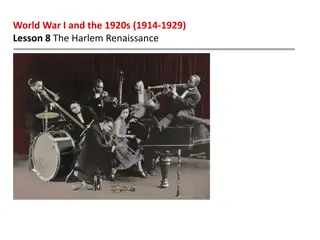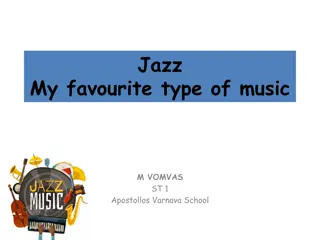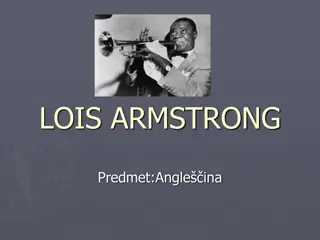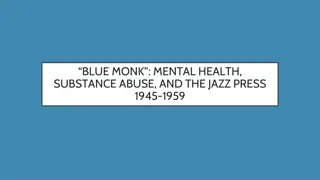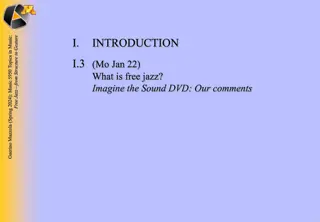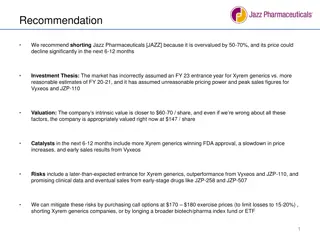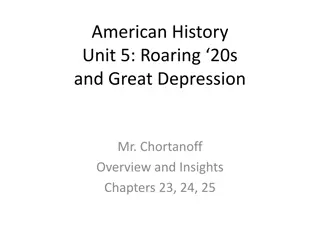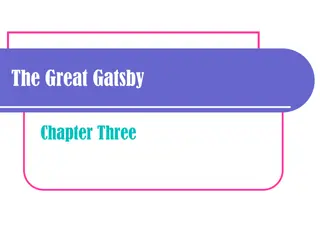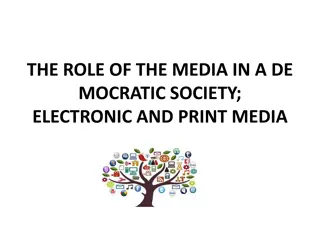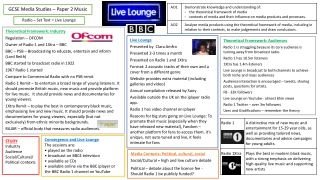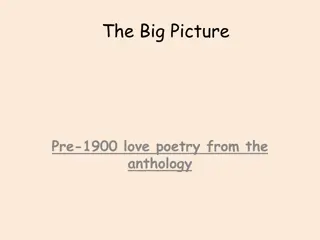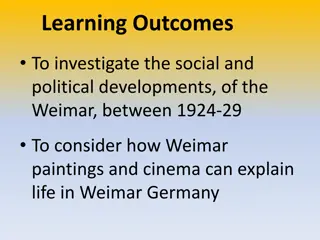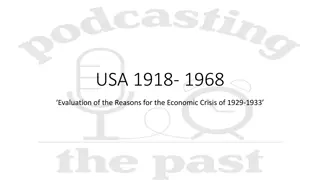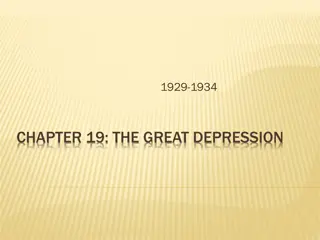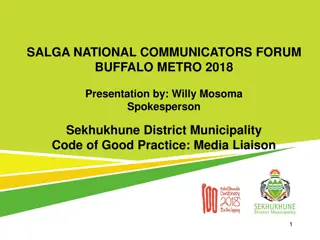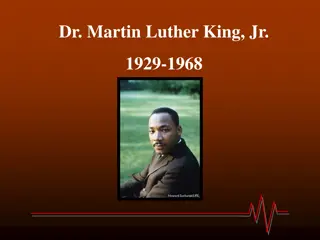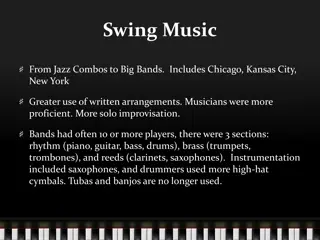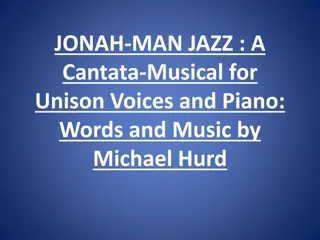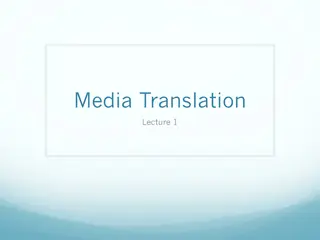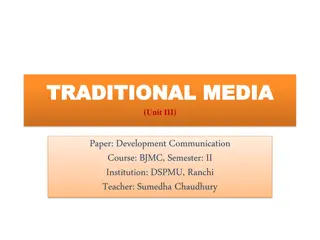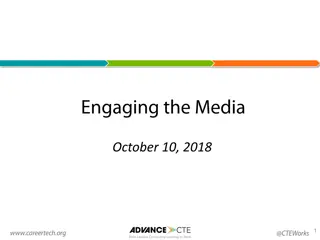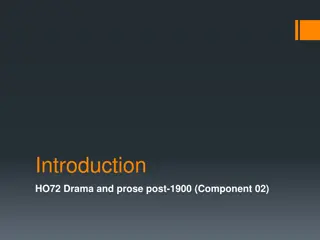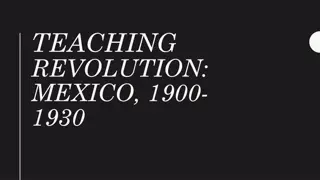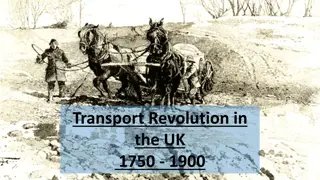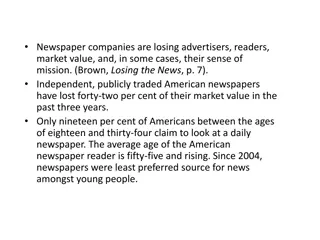Media and Entertainment in the Jazz Era: 1900-1929
The Jazz Era of 1900-1929 witnessed the development of entertainment through iconic theaters like Orpheum and Keiths, driven by popular figures like Houdini. Women fought for suffrage rights, leading to significant social shifts. The Roaring Twenties brought about a time of wealth, cultural change, and the birth of mass culture.
Download Presentation

Please find below an Image/Link to download the presentation.
The content on the website is provided AS IS for your information and personal use only. It may not be sold, licensed, or shared on other websites without obtaining consent from the author. Download presentation by click this link. If you encounter any issues during the download, it is possible that the publisher has removed the file from their server.
E N D
Presentation Transcript
NEWS IN THE JAZZ ERA 1900-1929 Rohan Bhimjiani
DEVELOPMENT OF ENTERTAINMENT Orpheum Circuit article written 14thNovember 1915. Houdini publicity via newspapers + he increased the popularity of theaters appealing picture of his famous needle threading trick. 4 built across Vancouver last in a wave of movie vaudeville palaces 45 theaters in 36 cities spread across N,America. Adverts, news articles and posters published to gain attention One of the most magnificent theaters in the world . Advert in the Vancouver Province for Vancouver s Orpheum Theatre on 1st November 1927 Province and Sun newspapers had 3-page special sections on the Orpheum shows the popularity + how the news further developed interest for the theater.
Another theater which was popular was Keiths Theater The theater had its own newspaper showing due to popularity a dedicated newspaper wrote just about that one theater. Founder was Benjamin Franklin Keith, Philadelphia. Although the news publicizes the actual theater, Houdini was a well known magician/performer who gained popularity via news of the theater. 22nd Jan 1906 front cover illustrating a lobby of display of shackles used by Houdini In his performances as The Jail Breaker and The Handcuff Kind
WOMEN SUFFRAGE RIGHT TO VOTE Refusal for women to vote let to protests and marches, such as the Washington Parade of 1913. Separate newspaper dedicated to the women and their movement called the Women s Journal attracted different attention in supporting them. Parade struggles to victory despite disgraceful scenes . Took until 1920 to reach the Congress, where they secured the right to vote. Front cover indicating the women s suffrage parade in Washington, 3rd March 1913 illustrating women on a white horse, a float and sky view of the parade News emphasized the movement front cover of newspapers such as The New York Times and had own newspaper newspaper the only way to interact with worldwide news talk of conversation
Main attention to the media the suffrage brought was from the inaction of the police and the actions of men which was aggressive and was much of the press coverage of the newspapers Parade designed to be visually effective so it can attract national media attention did achieve this however the attention drifted from the right to vote to the violence evoked amongst the crowd
ROARING TWENTIES Time of change socially and politically doubled nation wealth between 1920-29 Many unhappy with change people wanting to increase their wealth as well as new music/flappers NEW WOMAN Flapper (Jordan Baker) drastic change was due to the suffrage movement which caused women to act in a rational way to attract attention BIRTH OF MASS CULTURE many had extra money to spend 1st commercial in 1920 and within 3 years there were more than 12mil radio stations in households + people went to the movies/theatre greatest luxury was the automobile cars affordable and luxurious and by the end they were seen as a necessity.
JAZZ AGE young people freedom with cars (Tom and Myrtle/Daisy and Jay) radio stations and phonographs carried tunes to listeners across the nation Many adopted the trend of Jazz music (flappers dancing to black music) older people despised this change however the young loved it (Daisy/Jordan/Gatsby)
MOVIE INDUSTRY AND RADIO STATIONS Trade papers (Motion Picture News) reported and reflected the development in the movie industry ads helped boost the popularity of the movie industry as well as the newspapers and radios. Many promotional ads and brief news notes of interest to the industry to increase its popularity Development of radios in newspapers/magazines and now on the stations themselves discussed the development in radio technology, ads and articles on radio programming and issues of interest to the industry aimed at radio enthusiasts Descries Cecil De Mille as a discoverer of great technical talent and a developer of movie star author says his films buck the trend toward monotony in moving pictures of the day By Milton S. Eisenhower with the U.S Department of Agriculture talking about the role the radio will play in broadcasting advice to farmers from the U.S. Department of Agriculture.
